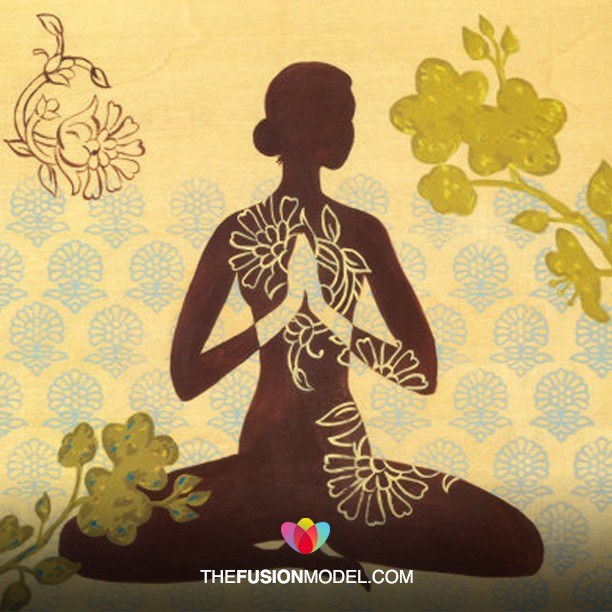Yoga is often touted as an excellent way to maintain a healthy weight, stay fit, and even as a healthy means of stress reduction. When one begins to look into the practice of yoga, it is easy to get overwhelmed. Many people see yoga as one type of exercise and while the basic “gist” of yoga is similar, there are quite a few different styles of yoga that can vary rather significantly.
It can be confusing and even intimidating to be faced with all the variations of yoga and try to determine which will work best for you and your personal needs. The different types of yoga tend to be better suited for people of different levels of fitness and ability, as well as personal need. Regardless of the type of yoga you practice, it is shown to help calm the mind and body, help center us, as well as to help tone, lengthen, and strengthen our muscles.
What follows is a basic overview of the most commonly practiced forms of yoga.
Ashtanga Yoga
Often dubbed the modern way of practicing traditional Indian yoga, Ashtanga yoga was developed by K. Pattabhi Jois. This is a more challenging form of yoga. There are no breaks between poses and it is best suited to those who are in decent shape. Breathing is highly important in this form of yoga.
Bikram Yoga
Bikram yoga is a form of what is called “hot yoga.” This is not recommended for those with health conditions and it is highly advised to seek the counsel of a health professional before undertaking a bikram yoga routine. This is a set of vigorously performed yoga poses that is done in a hot room. Most often, the room is over one hundred degrees. The 26 poses in the bikram routine combined with the heat make it one of the most challenging forms of yoga you can practice. This is one of those types of yoga that is best undertaken with as little additional equipment as possible, to cut down on sweat. Even the best yoga socks , which are made of anti-odor breathable cotton, can get a little sweaty.
Hatha Yoga
Hatha yoga is a more gentle, less strenuous form of yoga that is suitable for beginners and even those with mild to moderate physical limitations. All poses are designed to help open up different “channels” in the body, such as the spine. Movements are slow and deliberate. It is said that this form of yoga was created by Shiva and is one of the oldest forms of yoga practiced. When people use the generic term “yoga,” it is often hatha yoga that they are referring to.
Iyengar Yoga
Iyengar yoga is actually usually classified as a “sub-type” of hatha yoga. It is so named as the person who developed this form of yoga was named B. K. S. Iyengar. This, like hatha yoga, is a very gentle form of yoga and is perfect for those with limitations or just starting out.
The focus in this form of yoga is strength and stability. Props are often used so as to ensure that people practicing Iyengar yoga are properly positioned. This also reduces chances of injury. Comprised of 200 yoga poses and different variations for those of different abilities, it is suitable for yoga newbies, and seasoned veterans alike.
Kripalu Yoga
Kripalu yoga is yet another offshoot of the gentle style of hatha yoga. This is a great form of yoga for those who are just starting out and are looking more for the psychological benefits normally associated with the practice of yoga. The poses in Kripalu yoga are classic, traditional yoga poses that are done slowly and deliberately with an emphasis on perfecting the pose, holding it, and developing regulated breathing skills. Many aspects of this practice focus on honing techniques to quiet the mind in a manner similar to that of meditation. It is used as a means to cultivate compassion, as well as acceptance of the self and others, as well as a way to build external strength too.
Kundalini Yoga
Like Kripalu yoga, Kundalini yoga is mostly focused on the breathing and meditative qualities of yoga. When you take a Kundalini yoga class, you will work on breathing, as well as spiritual lightening. Meditation is part of Kundalini practice and chants are also often part of the practice. This is a gentle form of yoga that is best suited to those who are looking for more of the psychological benefits of yoga than the physical benefits.
Power Yoga
Power yoga is a variation on Ashtanga yoga. This is one of the most challenging forms of yoga you can practice. This form is best suited for the expert and is often the choice for those who are looking to maximize their weight and fat loss, as well as improving stability, balance, and the other benefits commonly associated with yoga.
With this form of yoga, there are no stops between poses and it is performed at a very high and intense pace. Unlike other forms of yoga, the poses in the form can vary widely between teachers. It is a more fitness-based form of yoga as it emphasizes the physical aspects of yoga, instead of the spiritual and psychological.
Sivananda Yoga
Sivananda yoga is a gentle form of yoga that is wonderfully suited to those who physical limitations or other disabilities. Also a subdivision of hatha yoga, this form of yoga is comprised of 13 different poses. Not only are there resting periods between moves, you lie down for a few moments between poses.
The form of yoga that will work best for you will be dependent on personal style, goals and expectations, fitness level, and general physical ability. With a basic understanding of the variations of yoga, you will have enough knowledge to decide which type will work best for you. It’s perfectly acceptable to try different kinds of yoga until you find what works best for you, or to even “move up” to a more difficult form as you get better at it.
Whatever style you choose, there is a suitable way to practice yoga for experts, as well as those who are beginning or even have physical limitations. There is a form of yoga for everyone. No matter which form you end up choosing, you will find yourself feeling more centered and at peace. Your muscles will be strengthened, lengthened, and toned. With yoga, you get a whole host of different benefits from one set of exercises.




